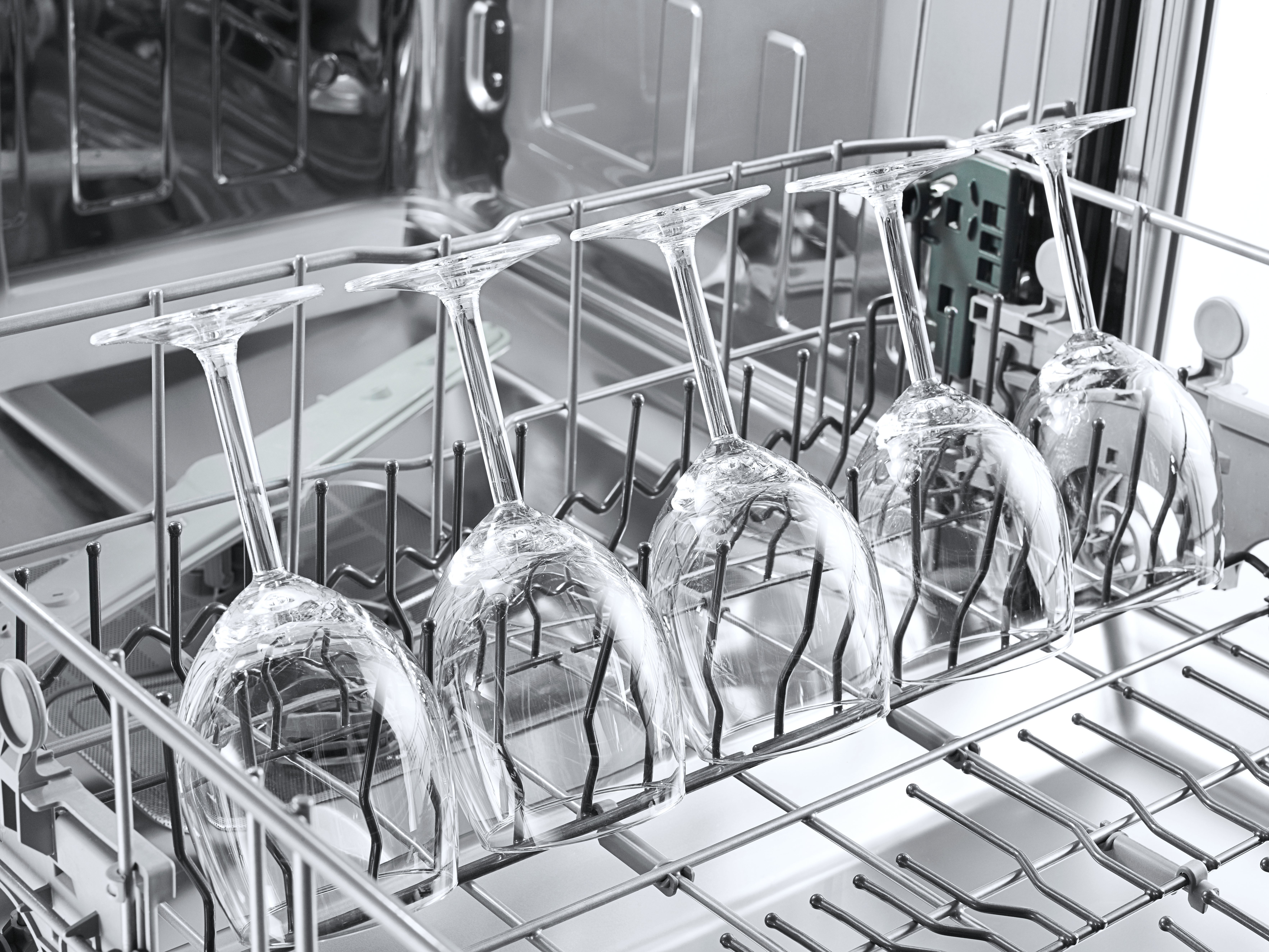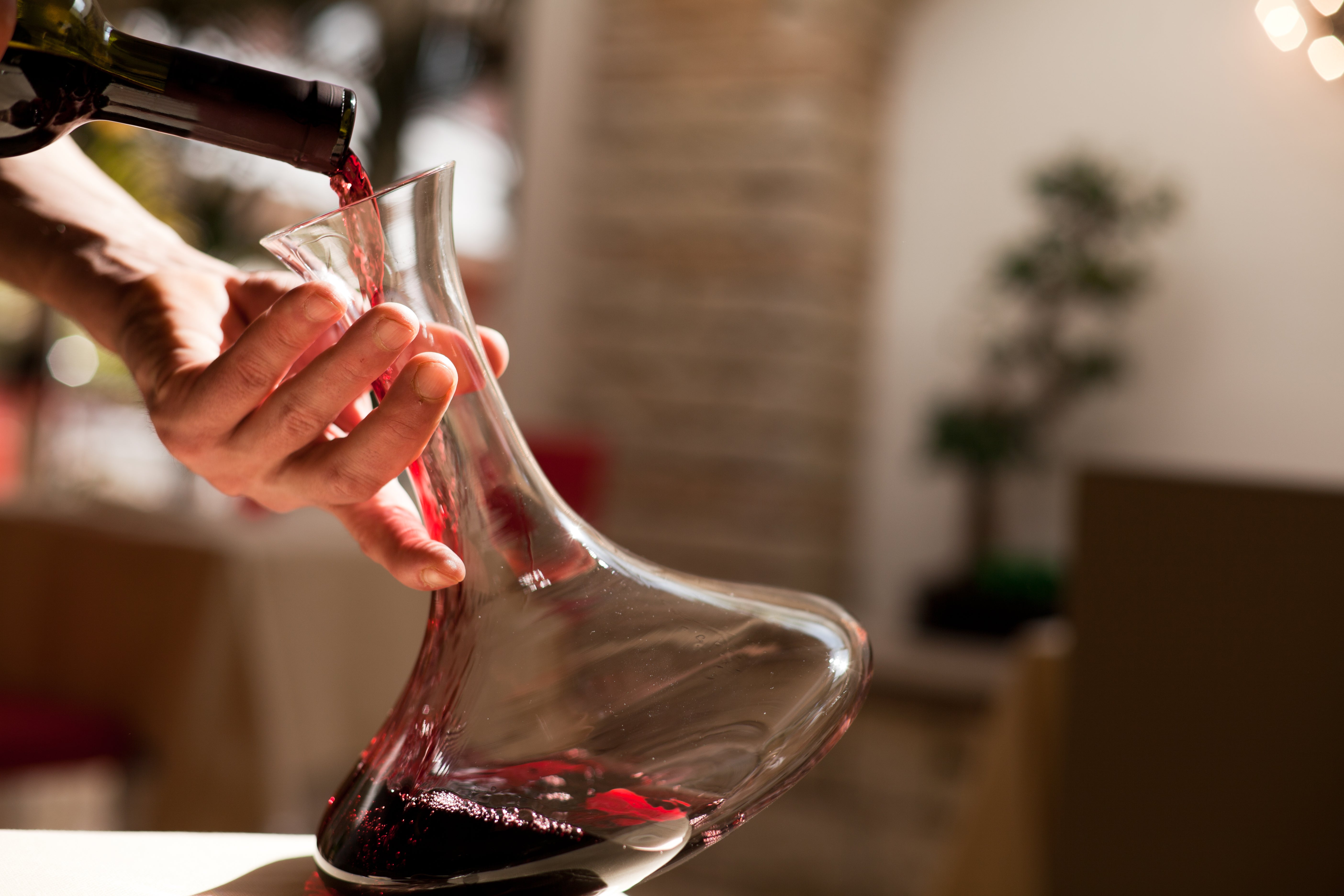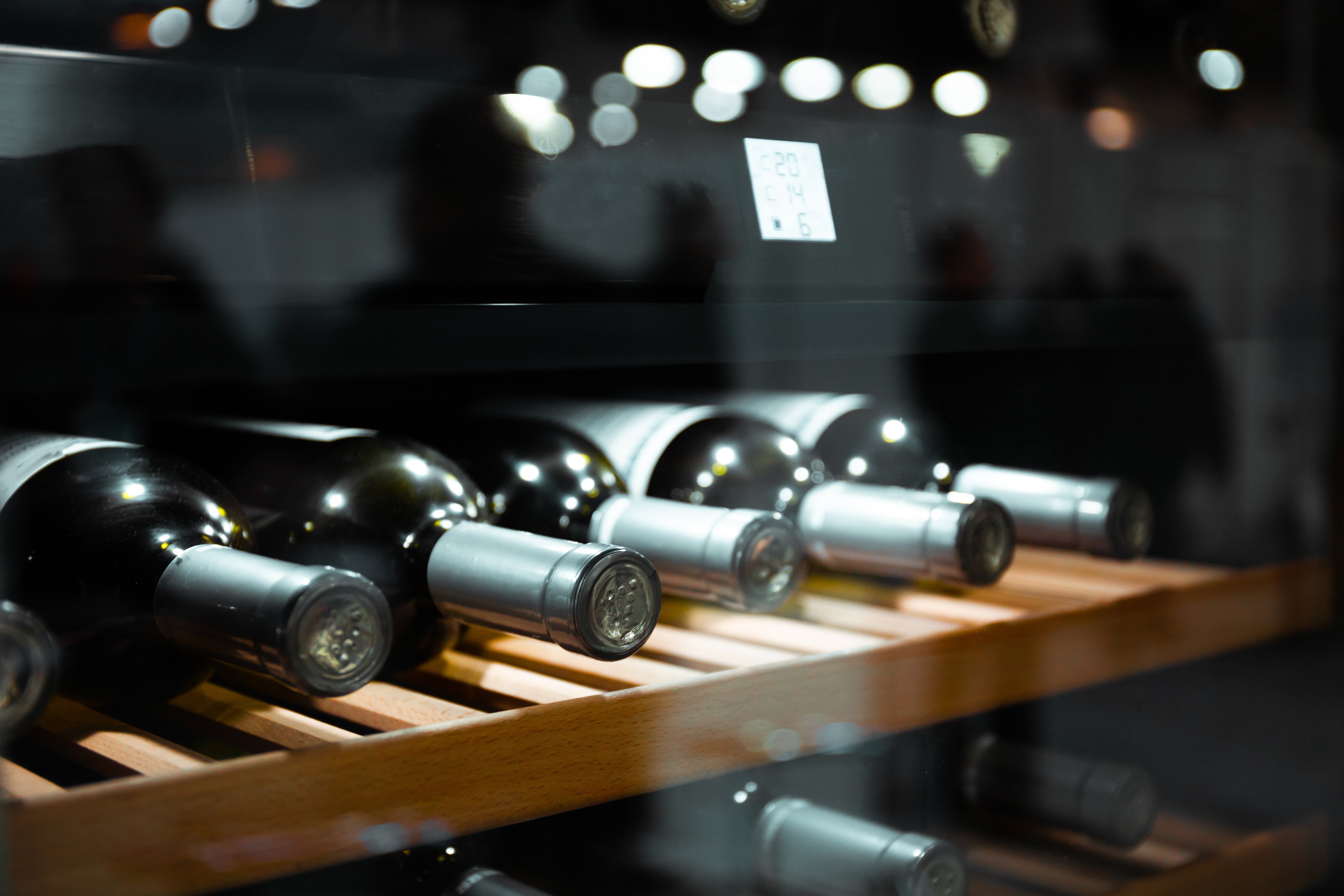How to taste wine like a pro, even in the pub
You don’t need much. Eric Asimov teaches us which equipment to invest in, what to avoid and how to learn more about the wine styles you most enjoy

The terrible human and economic cost of the pandemic cannot be ignored. It has forced many people to test the limits of their creativity and endurance. And maybe, for a lucky unburdened few, all that time at home has provided an opportunity to explore new interests.
It may have been cooking or knitting. Sales of guitars shot upwards in 2020 as people found relief in playing music. Or maybe you discovered that you love wine, and you have become curious enough to want to learn more about it.
Many great books can help to broaden your knowledge, yet with wine, the best way to begin the journey is by drinking. Whether you prefer to do that systematically or randomly is up to you. But whichever you decide, you’ll want just a few tools to enhance the experience.
Let me explain that. You really don’t need anything to enjoy wine short of a corkscrew (you don’t even need that if the bottle has a screw cap) and a glass (no, do not drink wine out of the bottle unless you’ve just won the Masters). But while those are the bare essentials, a few practical items will heighten your enjoyment.
Read more:
This starter kit is simple. You need wine glasses, a corkscrew, a decanter and, of course, some wine. Later, you can add to your equipment. (Fair warning: It has the potential to become a money pit.) But initially, if you choose wisely, the investment will be small. The potential for pleasure, though, is great.
Here is what you need to get started.
Corkscrew
You cannot drink wine without opening the bottle (unless you have a boxed wine). Though screw caps are welcome and easy additions to the range of wine closures, most bottles are still stoppered with a cork. For that you need a corkscrew.

This is an easy selection. Forget about your Swiss Army knife or the double-winged man whose arms you squeeze together to extract the cork.
The single best corkscrew is what you’ve seen in countless restaurants, sometimes called the waiter’s friend. It’s essentially a knife-like handle with a spiral worm for inserting into the cork, a double-hinged fulcrum for resistance, and a small, folding blade for cutting the foil that protects the cork.
This sort of corkscrew, which was deemed the top choice a few years ago, is compact and inexpensive, anywhere from £5 to £15. Wine merchants often carry them, as do many online shops. It pays to buy a few if, like me, you habitually misplace them. With a bit of practice, it is easy to use.
Wine glasses
You need a vessel for drinking the wine. Good stemmed glasses are essential equipment.
It’s tempting to think of stemmed glasses as fussy. What’s the point? You’ve been to bars or restaurants, perhaps, that serve wine in tumblers, and that works well enough. Many companies now offer stemless glasses, too.
Don’t succumb to the temptation.

You can relish a wine served in a squat juice glass, but you will enjoy it even more drinking out of a proper stemmed glass.
Good wine is sensitive to temperature. Both white wine and red need to be served cool, certainly cooler than the temperature of your body. A stemless glass requires you to hold it by the bowl, thus transmitting the heat of your hands to the glass, warming it and the wine.
That is the reason good wine glasses have a stem. The proper way to hold a wine glass is by the stem so that you don’t heat up the bowl.
This may seem pretentious. Wine drinkers in popular culture often hold their wine glasses by the bowl, by design, I suspect, to avoid appearing pompous to the audience.
If you grab a wine glass by the bowl, it’s not the end of the world. Those who gasp in dismay prove themselves to be the snobs. Ideally, you want to make use of the built-in functionality of the glass. So try holding it by the stem.
It’s worth taking the trouble to do this for another reason, too. The colour of good wine is both beautiful and revealing. Over time, you will learn to discern some important characteristics of the wine. A white wine may get darker over time, or if it has oxidised. A red wine, by contrast, may lighten around the edges as it ages. Holding the bowl with your fingers smudges the glass, obscuring the clarity of the wine.

To assess the wine, the glass needs to be clear, not coloured, bevelled or otherwise decorated in such a way that blocks your view.
Choosing a glass is a lot simpler than you might think. For one thing, you need only one set. While the wine industry, and especially glass manufacturers, have promoted the notion that each sort of wine requires its own specially designed glass – not just red, white and sparkling, but pinot noir, cabernet sauvignon, riesling and so on – the truth is that one set of all-purpose glasses will serve you well.
Wine drinkers in popular culture often hold their wine glasses by the bowl, by design, I suspect, to avoid appearing pompous to the audience
Good all-purpose glasses ought to be vertically shaped with a tall bowl that is wide at the stem and tapers gently inward toward the lip. This shape channels aromas upward, amplifying them as you swirl and sniff.
You’ve probably seen many wine lovers swirling the glass before they sniff. I do it habitually, believing that the action increases the wine’s exposure to air and activates the aromas. Chances are you will be doing this before long, too.
To avoid sloshing yourself with wine, good glasses need to be large enough to hold a decent amount when filled one-third of the way up.
How many will you need? What’s your style of entertaining? I know the pandemic has us all out of practice, but I think eight is a pretty good number for a start.

Good wine glasses are not fragile. Don’t hesitate to put them in a dishwasher, though of course you should be careful how you position them.
One more point: despite the long tradition of using special glasses like flutes, tulips or coupes for champagne and other sparkling wines, many wine professionals and I prefer ordinary wine glasses, which better show off the beauty, aromas and flavours.
Nonetheless, because sparkling wine is so often opened for celebratory occasions, use these stylish glasses if you think they more clearly convey a sense of ceremony. Sometimes style wins out over functionality.
Decanter
A decanter is not essential. But it’s useful and simple and can enhance youthful wines by opening up their aromas and flavours by exposing the wine to air.

What is decanting? It simply means to pour the wine from the bottle into another container before serving. Many people assume decanting is only useful for older red wines, which might accumulate sediment over the course of long ageing. But I like to decant young wines, too, both white and red, particularly those that might be high in acidity or tannins. I definitely do not always decant. But I like to do it occasionally.
You can spend a lot of money on fancy decanters. That’s unnecessary. An iced-tea pitcher works great, so long as it is big enough to comfortably hold the contents of a 750ml bottle. At home I use 1l Erlenmeyer flasks, which have a certain mad-scientist charm to them.
Things to avoid
Wine abounds in useless gadgets: advertisements tout the virtues of aerators, which purport to age your wine in a matter of seconds, and similarly magical wands, said to eliminate the possibility of headaches. Save your money.
Read more:
You will also encounter pumps, closures and other tools said to protect a partly consumed bottle of wine from spoiling. Avoid them, too.
Good wine – by which I mean carefully made, not expensive – is much hardier than people think. You can safely leave unfinished wine in the bottle for two or three days. Just put the bottle somewhere cool and out of the sunlight.
The wine
All of this paraphernalia would be useless without wine. If you are investing in the proper equipment, you also need to commit to serving good wine, made from conscientiously farmed grapes and painstaking winemaking.
£15-25
The best value wine
The single best way to achieve this goal is to develop a relationship with the best wine shop in your vicinity. Unlike supermarkets and the equivalent, which generally sell popular brands regardless of quality, good wine shops carefully select their inventory, picking wines that they can stand behind.
How can you tell if a shop is good? It will be hospitable, its inventory will reflect a point of view, and the wine will be well-stored and displayed. Generally, it will be a place that makes you comfortable, that you want to visit.

In selecting wine, the best values are most often in the £15 to £25 range. Some wines, particularly the most famous names, will be more expensive. You will have to pay more for a good champagne, barolo or Napa Valley cabernet. But plenty of great, less expensive bottles exist.
The best way to start out, once you identify a good shop, is to ask for a mixed case of wine. Tell the merchant your budget and parameters, say, half white, half red, with two sparkling wines, or a few rosés. Or, if a case is too much of an investment, just get a bottle or two at a time. As you drink the wines, note which ones you like and which ones you do not. Keep in mind that you can learn something from every bottle as you begin to identify your personal taste.
When you finish, go back to the merchant with your notes, and ask for another mixed case with selections based on your reactions to the first set. Your learning journey has begun. As long as you continue to love wine, it will never end.

Future considerations
As your interest deepens, you may want to augment your equipment. You might want to buy better, more beautiful glassware, for example, or raise your budget on wine purchases.
If you begin to accumulate bottles, you need to consider wine storage, especially if you are buying bottles to age. Nothing is worse than investing in good bottles and ageing them for years only to see them spoiled because of poor storage. The solution depends partly on your living situation.
If your house has a cool, dark, tranquil basement, you are in luck. Throw some shelves in a corner, add bottles and let them sit. If you are in an apartment or don’t have a basement, you might want to consider a wine fridge, a unit intended for wine bottles that keeps them cool, generally somewhere from 10C to 15C.
On choosing a fridge, two things are important to know right away. First, buy the best one you can afford. You are entrusting your wine to this device, and you don’t want it to fail you. Second, go big. No matter what size fridge you buy, chances are you will outgrow it before long.
© New York Times
Join our commenting forum
Join thought-provoking conversations, follow other Independent readers and see their replies
Comments